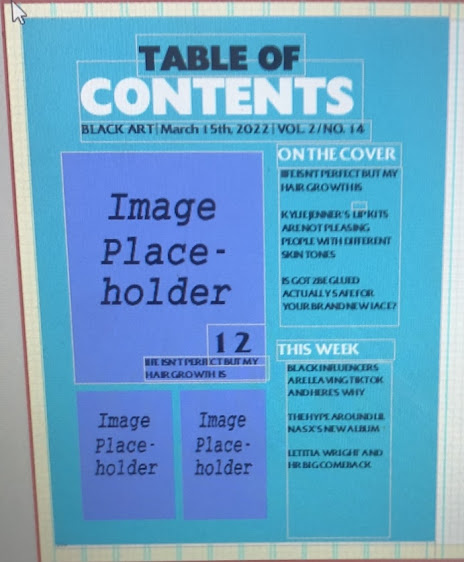Soon after creating my magazine cover, in mid-November, I worked on my table of contents. Many examples of tables of content from famous magazines were provided for me to help me create my own. Here are a few of them…
These examples helped me realize that several things needed to be included in my table of contents which was…
- A Title
- Publishing Information
- Photos
- Captions
- Margins
- Design Elements
- White Space
- Spacing (Macro, Conventional, and Micro)
- Folio




Comments
Post a Comment